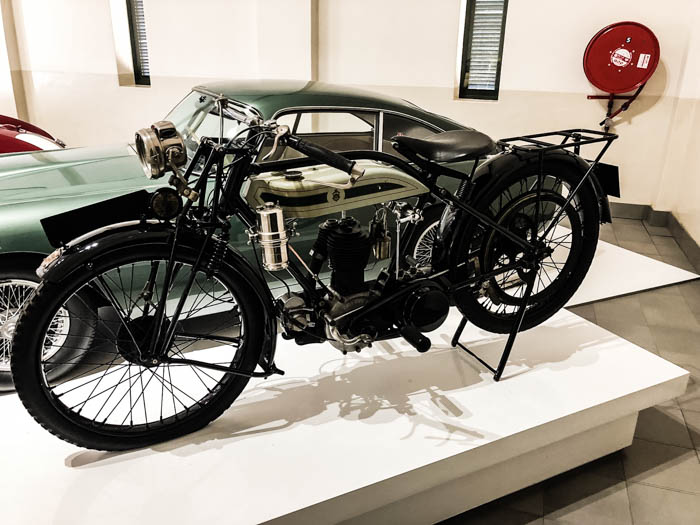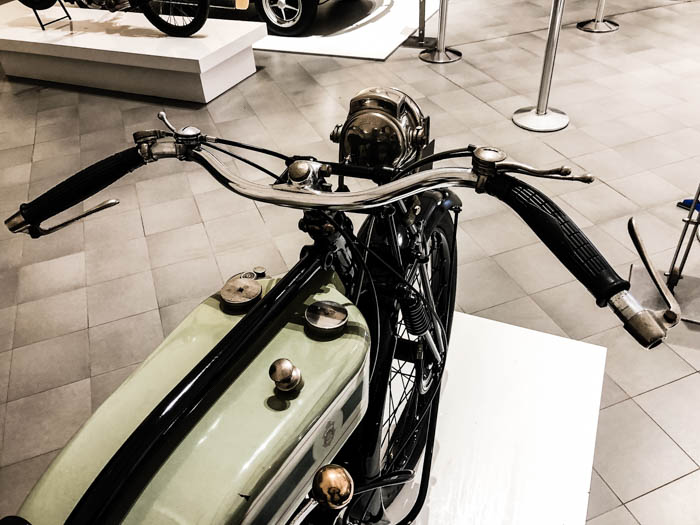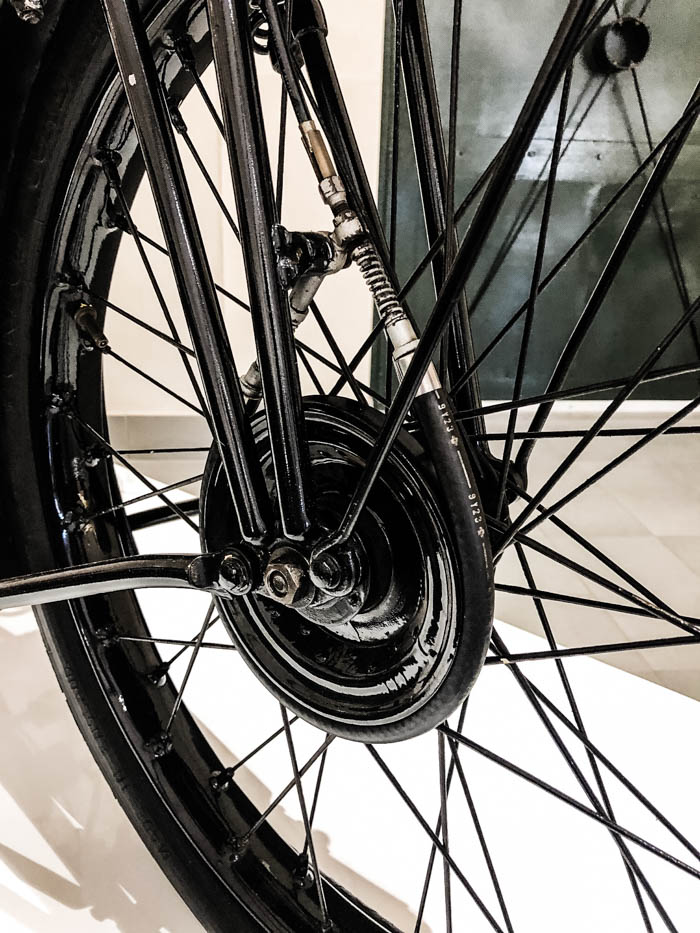
29 Aug On yer bike: 1925/6 Triumph Model P
FMM curator Wayne Harley is a self-confessed motorcycle enthusiast and this month he ‘goes forth on a Triumph…’
The subject for this month’s column, a 1925/6 Triumph Model P, has been quite an interesting one to research because I just can’t put an exact date on it. This is due to the fact there are a few too many facts that don’t correlate between what I see before me and what the wise old guys in the books have recorded for posterity. The engine number dates the bike at 1926, but the machine’s hopelessly inadequate front ‘bow’ brake makes it of 1925 vintage. That the frame number can no longer be clearly seen on the bike does not help either. In addition, it appears that this poor bike has been taken apart and reassembled a number of times in its lifetime, which is never a good thing…
However, what we do know is that the Model P Triumph was introduced in 1924 as an entry level 500 at a cost new of around 42 British pounds, and was effectively the company’s first motorcycle to be produced on what we could consider a mass production assembly line. Sadly, the first few off the production line were troublesome, showing issues with the clutch, forks and front brakes. And due to the rapid production rate of the time, many units where delivered to customers before these teething issues could be resolved by the Coventry plant. But Triumph soon sorted out these early teething issues, and before long it was producing more than a thousand motorcycles per week and became the market leader.
In 1926 the Model P was upgraded and the sportier Q and QA models were added to the line-up. The model P had a 494 cm3 four-stroke side-valve engine that produced a claimed 4,8 hp. Using a very basic total loss lubrication system – something you would expect to see on a motorcycle ten years older than this model – it’s clear this was one area where Triumph was cutting costs. However, the motor pulls strong with ample torque in all its cogs, and with a standard three-speed transmission with chain and sprocket final drive, Triumph claimed a top speed of 80 km/h.
The front suspension is a typical twin-spring druid-type fork and gives a rather horrible ride. The rake on this bike is within spec and yet it still steers and turns badly, almost chopper-like. There is no rear suspension to mention, so as with most motorcycles of this era, the saddle had to be a very good one to ensure a comfortable ride. On the brake side of things, the front ‘bow’ brake is really not effective at all, and on later models it was replaced with a more common drum-and-shoe system. The rear brake with its drum and twin shoes is not too bad and stops the motorcycle safely, even if you are cantering on a little.
The riding position is neither the worst nor the best I’ve experienced, and a long ride would not be a back-breaking event. But what is really interesting is how neatly and well thought out the handlebar grips and levers are, considering this was an entry-level model. I am tempted to say the handlebars could well be off a later or more upmarket model.
Once again, it’s an honour and a privilege to be able to ride such wonderful examples of British motor cycling history. The Model P remained in production until 1927 when it was replaced by the Model N, which used the same proven and reliable engine and gearbox.





